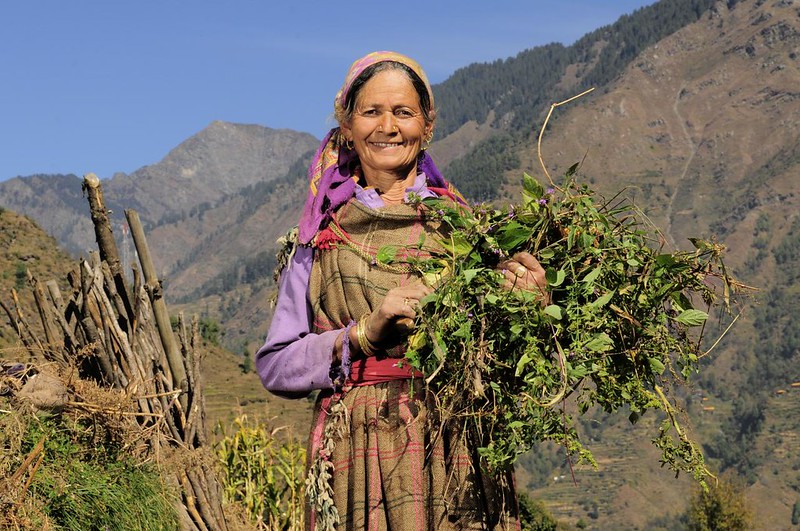How MFIs Contribute to Alleviating Poverty Among Indian Farmers
 In India, where 52% of the population engages in agriculture, a significant number of the rural population depends significantly on this sector for their livelihoods. As reported by the Hindustan Times, about 20% of this agricultural population lives below the poverty line, forcing a majority of them to seek loans from informal sources to sustain their businesses. As poverty increasingly affects Indian farmers, microfinance institutions (MFIs) play a crucial role by providing small, formal loans to empower them in their struggle. In a country where sociocultural factors hinder economic growth for small farmers, MFIs in India endeavor to overcome these barriers by facilitating quicker access to capital, especially for those who do not qualify for traditional bank financing.
In India, where 52% of the population engages in agriculture, a significant number of the rural population depends significantly on this sector for their livelihoods. As reported by the Hindustan Times, about 20% of this agricultural population lives below the poverty line, forcing a majority of them to seek loans from informal sources to sustain their businesses. As poverty increasingly affects Indian farmers, microfinance institutions (MFIs) play a crucial role by providing small, formal loans to empower them in their struggle. In a country where sociocultural factors hinder economic growth for small farmers, MFIs in India endeavor to overcome these barriers by facilitating quicker access to capital, especially for those who do not qualify for traditional bank financing.
Casteism: A Deep-Rooted Cultural Issue
Casteism, a cultural community hierarchy in India, although outlawed in the 1950s, still has clear implications in today’s Indian societies. About 82% of Indian farmers belong to marginalized communities and classes. Caste-based discrimination in India also extends to the financing sector, where members of the lower caste are forced to take out loans from informal sources. The risks and often high collateral from these informal sources lead to a perpetual spiral into poverty for these low-caste individuals.
The establishment of MFIs in India streamlines the process of receiving small loans for individuals facing caste-based discrimination. Microfinancing groups like Annapurna Finance and Fusion Microfinance play a crucial role in alleviating the financial challenges of these small, underserved farming communities in India. By specifically targeting these marginalized groups, these groups bring more formal and legitimate loan opportunities for these farmers. Access to formal loans reduces the risks associated with regulatory oversights and legal issues, enabling marginalized farmers to repay these MFIs in a much more relaxed manner.
Empowering Disadvantaged Women Farmers
Some MFIs in India not only make it a priority to provide microloans to women but also educate them on agricultural development. The Society for Elimination of Rural Poverty (SERP) in the South Indian state of Andhra Pradesh focuses on underprivileged women, establishing self-help groups through the provision of microloans and imparting market knowledge. The market knowledge provided by SERP includes understanding how third-party groups can exploit their profits and how to spend less money on seeds, fertilizers and pesticides. This knowledge has helped several female farmers to break “from the shackles of money lenders and traders.”
Many rural women in India are often rejected loans from banks due to their illiteracy or even asked to provide collateral even if they have no assets in their name. This proves to be a major problem, leading them to face local debt collectors and loaners who often have high-interest rates. When organizations like SERP started offering legitimate microloans and financial knowledge, individuals no longer needed to resort to loan sharks. This alleviates the stress associated with informal sources of loans, empowering them to pursue their livelihood as farmers. Simultaneously, it provides them with opportunities that can contribute to lifting them out of poverty.
Key Notes
Microfinance institutions in India are making strides in empowering marginalized farmers, particularly those affected by caste-based discrimination. By providing formal and legitimate loans, such as those offered by Annapurna Finance and Fusion Microfinance, these organizations help break the cycle of poverty perpetuated by informal sources. Moreover, initiatives like the SERP focus on educating and financially empowering disadvantaged women farmers, offering them an alternative to exploitative moneylenders and contributing to their economic independence. Overall, these efforts signal a positive shift toward sustainable rural development in India.
– Aswath Jaiprakash
Photo: Flickr
